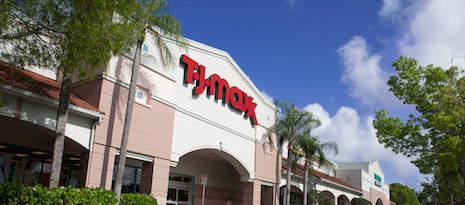In the face of industry change, it is not the end for bricks-and-mortar because, despite the number of stores declining, in-store sales are on the rise.
According to Fung Global Retail & Technology's “What Retail Apocalypse?” report, consumers’ interest in experiential shopping is making a direct impact on retail real estate. Bricks-and-mortar storefronts focused on just selling apparel have been the basis of the drop in physical store numbers, but malls and shopping destinations that act as leisure hubs have seen solid occupancy.
"The 'retail apocalypse' narrative has largely been driven by apparel retailers and department stores, whose closures have tended to most impact selected regional malls," said Deborah Weinswig, managing director at Fung Global Retail & Technology, New York "Open-air shopping centers and destination malls generally continue to thrive, supported by sustained demand at nonapparel retailers."
Still alive
The number of stores in the United States dropped for the first time since 2009 last year, driven by the closure of many apparel-focused retailers.
In response, many shopping centers are looking to incorporate a more robust offering, such as grocery stores and mixed-use spaces with entertainment venues.
While four out of five of the top retail real estate owners claimed a decrease in year-over-year occupancies, bricks-and-mortar sales saw a 2.5 percent jump in 2017.
Per Fung Gobal's report, store sales are set to accelerate in 2018. This means that sale density is on the rise, and the absence of excessive bricks-and-mortar locations may be helpful to the industry.
Department stores have had a hard time recently, with mass retail stores such as Macy’s, Kmart, JC Penney and Sears closing a total of 566 stores, a 3.5 percent fall in 2017. Luxury brand boutiques and retailers have not been immune to store closures either.
LVMH-owned fashion brand Marc Jacobs, for example, announced in early January that it would close its London boutique on Mount Street in Mayfair, which was opened in 2007. Additional Marc Jacobs stores in Europe are also slated for closure, but the brand will maintain its wholesale relationships in the market.
The digital takeover has not yet eliminated bricks-and-mortar, as offline sales have accrued 88 percent of sales last year. Excluding food categories, 84 percent of sales were made in-store.
Malls as a whole saw a decrease in sales, with a 0.7 percent decline in sales per square foot year-over-year. But superregional malls are seeing significant success as the only segment to actually see a jump in occupancy rates.
Open-air centers are seeing better success with occupancy, and power centers who focus on a few anchor tenants saw two years of reduction.
This has not deterred department store chain Barneys New York from planning its first store opening at an open-air shopping destination in Florida.
Barneys recently signed a long-term lease with Bal Harbour Shops for a 53,000-square-foot store, which will anchor the mall’s upcoming expansion. Scheduled to open in 2023, this retail placement was years in the making, and shows the retailer's continued investment in bricks-and-mortar (see story).
The top retail real estate owners may have seen a decline in occupancy, but it was only marginal, as they still maintain a 94.5 percent occupancy rate in 2017 compared to 95.2 percent in 2016.

DDR Corp. runs major retail spaces around the U.S.
Players such as Simon, GGC, Kimco, Brixmor and DDR are the top retail real estate property owners.
Retail and real estate
These changes in the retail industry have made a significant impact on how businesses tackle their bricks-and-mortar strategy.
For instance, a shareholder of Saks Fifth Avenue parent Hudson’s Bay Company is publicly calling for changes in how the organization uses its building assets.
Land and Buildings Investment Management, which owns almost 5 percent of HBC’s outstanding shares, is pushing for a plan that includes remodeling parts of Saks Fifth Avenue’s New York flagship into condominiums and boutique space. The investor has met with HBC leadership, but has threatened to call a meeting of shareholders to oust board members (see more).
As consumer behavior continues to change and online shopping further disrupts the sector, retailers must look to streamline their real estate presence.
Retailer Hudson’s Bay Company, for example, recently entered a global, multi-faceted strategic relationship with communal workspace network WeWork to sell off some its property. The partnership is one of many similar strategies in which luxury retailers are scaling back their bricks-and-mortar presence (see more).
"If I can have two, they are these," Ms. Weinswig said. "First, the very biggest retail real-estate owners saw only relatively soft impacts to overall occupancy levels from closures including bankruptcies: occupancy levels remain in excess of 96 percent at GGP and are not much lower at retail real estate peers such as Simon and Kimco; second, despite e-commerce sales increasing rapidly, total in-store retail sales are not falling: we estimate that total offline sales grew by a solid 2.5 percent in 2017, based on Census Bureau data."
{"ct":"JvTY4YoOmSAJo7a8bNOlAwueiwKO1sBfzizCzv04t8EjVyFxqs5rmhe8cNMhxogQPQPO30i\/dRf8S2glL1YxMa8YMQbOGVo7BoXOvdjd4DAI7i8k1leXisNrsyygaNgyloGIuPLSsXrSfFHHOCI7ViBnDf6ENS5oNoTMUIiEdPjZrI4WoEdZA7pUIRekMXNmN5P0aIfI3cw4U9Rb8Q7riFHWJLwZqEd01UVFC3+6fjlIpAHluWO0bhp6o54RJIco2RsrX1zsJhWyl729hqbQy8LkktWPZemT3ouwq9rLBHw58ZuqOcA2FGdaoPCIljIdZqE6wxLSt3hv9WiWz0I9oYZGtUNGy7i82xa1Ke6V5G3nI60mcaLQGl3cr+tRcRpKp7\/za3OX40OkFlqPMUVZAlEFKyUd8ivKlNOFkpMIqyJ3M8C5LYOkN3FqmCEsnX2LmrfyJuSe2G8G8NFvb4Jo8NZpFMLSKCtaT4ZFFyORlAG184rSaaUi9koKZeAzINJkvnnFqdOUkU2213LOa05ITzsE9UdW2KTsbYwEtBwOF6rK59MazwfvYf95CFTgATDLcgUREm2DNYR1b73tKctoUFGnbmjJfjo4tQD4mfTEDP+AxQkSYJYHMNCDW\/f5aaYnCFdeLy2OmZmHAZRvpbR2xr6HSA6RZtf9mxEImrpaMxY0Mj3BXFZ4lSGV6II0P9oNr0QZyr6pq3MVVBLo6ykEO6UbmblWmog1\/kUfpJXI8MKBasVnVTSTchH86WsLXge+WLZTx9SUWSfLwrSKKDoqHKitBPlUZyezYSJeS9CkPoXYF\/XNOvn3Hvc0bU5UamA71UEabvis9IVLOGpU\/Owleh+HXsg0wR1w8uQ2HkMS\/3UXkz\/5\/2OB00MwpMjdV0\/u+M7FQn3MKKMyWskDoiA\/aUDi43B+RjmhpvqylhOrmY3zwDNtQav1TWwnMHrA+88KETkEb1gZs5KfPycAFOBwNL1E56waEwd\/Vqe4+3q9X\/4VFJ5wDseqdruYTVqvhGY88swvURnSj4wINVBhnP1PfOm1z5HFB7nr46lI7J3Z8KOuFYFr0S5OJBtz3gt9meYRih0Pf4IQXcQw9+cqr8RYog3rhVjbYx6AIfawcELg9NIcrIO4Ep5ZXqYbKopTU26B08bn4iZbbPPOE2\/3pSTUlRrHs5QVVMHVxW6bvI9C8ksGKfixFiPyZDLSgYItEdA+gFI1mHiVe9kQDMPVkzKiJVN\/VwxEfQr4hNFn6SuZlgzeWdqTD8OK6xt25Avhh1kUAGWBc+93a9MnKnheKjY8ys2fT3hiCZo\/MQY\/aolYW2c2Al\/rjrRRLWOE9OuuCZPbvT0+fazkAyKM\/XHrVW06GLCfuHu4Ho95U7ctf0YOry9VjviAPPBhP9jsApevOIVCsAeVUs+CxuCfOXyslBkxPfdR66G6Hgdru2byaIQg1MjVrpSflk3PxZePFIMrj62YthXEA4hU033ntnfZOKdWqJ1KlHRrZjlgP4fnH1qu1w7z4EarPfDcgIjBDZC9T7n9W0L7a7ej6z55CL2crsAlEHqk\/sqRr+2H5XOJgMoJboD7razKMVWjXkwvTeLyZ1rCigHyzihSmRYXno84Pn5cN1Qt7qGYda13FIHFAksv8LLjw91dO9oiclBL\/0zh6zawJ4B\/Lus7hQR0teH0WDTQpLI0tmM9g\/VrxKNchu62wuYjfhtrVTwTl6ynCvU+Iqw4cAb54Qt+h+C4MP\/WDaC33UlBWugjZvvani49bGOmHwnvJHnc4N9g1zlHVNiGSEuGuIw3CfJUCfStLC0inIW2NXgAkk9pMU9WiG0DS5RHEmcvbJOrbQCfbllzQ6gpmPJfDnS769f0+6FAR0g2OdIVUz+NvqYokh2isPWXc0qwcj1HwW3+Ixyba\/tEm83ne\/ypoo46sFJyzlkTubRZRT3TwXHhthS61bPmxGJWJEcRch8pwNTbap0VqPedGfXZPTv4QrHHU93u\/zQm5ZsPImMGq5n2rMKU+2uT7dw4un\/W7mzONp\/hd5upg53lo5R0sciCclg4afOsQRC+CBs6S6l71fUiFOuU4cjzF+BDBMPgzczBsajLjzrhD\/gNI0h+ODO5GquEIfoYytUl04zAY0JN7qgmxp1YuAw7goYYdR1gkik2eBa6EmJBJvHEUgr6kAQOOggDb5utuIFAASXNb4PudOsFh96Olz8rLLgmcsAkqdjedJyPYVNm5odTcd0kMcagaFZTXZ7NkjroqbfGcppLVpQhxryulJvGJreYLCGlquIeHYZcR\/+KyQ7SwE1wvvZTUbRpbRRHPxhozm9o6RVDrERLo8wVSrgurWwMnzc2veV41fWIuTdJe0MueXfhKBPkVBWE\/olLWA60bNDRPhzfFbKRwmdADNw+TR01pVrX6Vp7hDOkmRYd7JqcgcJaXMrphfLg70Z5VpyKhHkixvwlW\/dVphQnWZHo8yYSIotqVCJk2f\/6lyp7sPfddb89RRcafMBs6+4lOA1so6un\/k2VuHolpkwStcTts1MaaoZ6Kc51kECiCD2EXJW4\/vJ+qVyE9UCqvHN8+TfdcENGAy96V4viXypIT4bJFjqlTWI\/NVmhjC+gCjtwujntP4P1RKsTeoFSyTESI+hmgf3DwRPDPfbXMkd1Hb9TcCmD63kOkNIlg4BBQa6AfN0Yc3iXKqw0StIYQzvhvj1hKnQJMllSoPi4ObDYX58fxtO\/hUHU2c0QITbiLmCaFDObrK9PIFaXEg7m2LcU\/bWBk+JyXTvhCME+72Ir81wjyQiwIGxYQsdMwmgdrj15Tbw+5TZ8e+XsNgybGusDGhXaVWuRED7QP6BPX6ffGBg2oTqsgVIO9HztM6Pkkh6v7cBTVgTp840LL2A2o3lI\/4c6imtGDsWiDH3AlvBCoemcdVNvFxklDYbtNO1m9VGpAzCqcz2g1UPDdWtCSnuAum4\/npccycLopILeysuVLAJBbauAuE8mJYBSOkNyG5To8rY1okC2EsRKezYMVlKn4EFnXYC2a6c6ZMu4HdXpTQHnPXuXeWRi46opffbNvxfu5dv7QOI1mYWcC5t2WzS+78xRdgccSnngh9eiA0J2zN77bgBlzpb1\/NDGI5\/bZ4X6\/MLXRtJCEqqZRjctrwVPACBmG+Z4d468Krdpyor1LMgGfUZC5BspyKXKIf2aMTD81nqDnSB2B8TaV10vvene4ZWnp9NQRzxAEqvv2wcFyvvIQmAzzunAXQFaKd\/bP5cSrOdIt3FKbS3ElObAi5dFvfiL17tKOrOlIipJt7MB3Zll+QNMcTbKggRIRolW9Dh\/RLh6PBsed0v1rcxNU5w1i5wG\/u8CkoNutEmxmlAISzmxH00EsJ2QP2\/ezeQNRm1f+cj2SV7L9nH7pjVyT1nRPh6t9lpjckiwKsLccJYDmawcfYE6Ck8rfmALQTwxraVHgeB6nTJp\/CR3cGi\/aIYcCAgtvDRAC5y5aVv0\/cCK3NxNMuInZ4I5XKpQOpDTjy\/KsejRX8cqLSyMo0y2nMDqUwziZwhtXaUEUc4WMSE8NUBE\/PJ+u6NcKzNUc+JgMjl970vIqC7ScU3JjjLYgGw2yIZWQ3oB2nmTokaVQWEcKdGZXhQfLtKkY6zg2wJWf8phNpNHNfMeqyCrxrBhw2eKgDwUlx3zWJWBx+BHLrQqc7lw9I76FrMRGrYbnOjIR\/\/7Zq2pDBy0z6P0gAOnbA1yzeEZVqaR6yvatyDnG2+v1BHM4ykw\/eZfU9OMUkpeYuJAT9HR7thiSkgsCvr\/tVoHj+I9NngA901BTzu6rgX6HVBw2GCcp1c74Lvzhl9w5Q0lrnGqZgCJNmkwz5tb3Yxf4GNOKcrYaHmwsLsM8xbmJEBeUT6++Ra34dNudsvaeZbZhWpNLck422vi3ncqQf3NZfC2xTObbI\/qokJyV\/tD+298bKObT98nyCNIua+LYtoG1mylg6Dbecz0wwJ7SmZ6AkHuOpIxtV0JR+fNvYUrFlyllj6SRREv8ZOZAt4aSNVngCCuv9bU\/o4hHDzz8CLD58bWYUGlYCHXxiPZmPlWaROI1en23mzeClhNp7\/Yo6jVbj1sGR+tpPzQMZb3spzHv07gyI\/gw3H88+Ufnyt7+p5Ea8k0KClGOlmInEvJe8LpxRPe+rIqrx9quX4EBPj5+mBt\/UPAGbjzokYhe3hOACTGDDRoFNEzdDPjMEl7ik3g37KKsUmlN4tJ2TH8+ltWX0Qh8sLZD3ZHohtL3WVhQMddby54Q4KSdMZ439G\/c7BphU3w2LpIeMAGCXqk5C8gS7pYPmsh\/t0Bwr7Gw\/5p0pUTJl+NVdAonuXEUgwRjUaI21CmH3l6Juu3yCF5FoA3wqY7Q8oH9NaK2v5KQNLM8Fc8p2SG9OpsfRaBk0Fhg55ZEU3UAVNQ00\/ZByQAcjwfs8sfik\/2zxCLNDqq8P0Kwg2BNfr5XWEf\/Ir9M8RilkCNZsPZ8kNIVmmigxfeFAWhD8xxUhVNgnhxJo92afJLZ3MuFNRRcrM99EjJYu9jZd\/yHtQLmgXCUTqFyMC4GfXjZJc+xqwhG+Umf8PIIb2KaHLmhzP5gD16XldxTjxoUIJgiGLgsi1\/MPeAjDyNZLUOPvI0sVWMsUS36EdXfqpEkKYkY+hemx1QlFwKIGWa3CVvy7Sc2FnU59pkbNh3wmPW\/LUbsasrHTdt9ugdJnPjwRzEK2krA3JEc6+AWnhCkD8VNRyzGUXYUJce5bmo1XhuNf1C4dVCAsOPKNQEOfeMs6ROnU13p3iadqOqmReU\/UUShMTyM40TJUFwCDwUu6KKBx4wH4DBGeXFUxagMiVkpLHg\/eGrKa8h40r\/ZKokiOm1huBRT70RWdnMl0FdiGgOJQbxNUbibl4brKZPUZ2HtmsV8t57B\/O0QqyVOeGUvm+Jq3a2PXciJT2kmguHzt0lAL0nKcBh5nQr\/veT1ILdXbOHP41zOJ\/eTR8WainDDX70u5l6I1C2WHBhApZHK8Prt4juBFxIu9qAf+ouiGBSrjjkFo5Z9t\/dI6nJeLU6xl12n9jb79ZPArGS0ltmqCrkokIayp3S2rZCMtPZAk36TI7+HWjJO7Pg5DqQQOXhrET6v\/UKJim0gKu2322of+wedeaNQA3hgfh2LQnmQvM3SpY9oDXHMWVeCvqRs5qi3c9aywZ\/iyN1gNguO0QsP6ZSRHNB46pggl0y6b6rLGZD+gYRuXxvQeATC8zi1qRe7vpKSUPUcfPG4m\/fqno92GI9MMqidr7Fg8OdSxMpT4eT5q+TO2VknqM\/D8f0FHaS1uTmUWpz\/UWvCQkMUaaPvm+9f0a0uksmY2F6Zfi+2deXGKGAm6EmhWbuby9yXEcBZzs705y6EpgcJJP4\/aB1wvzHmJgCsrcspx+OeHB29+FqZLy6Ql1S9k5CyPVthJa8JsBOukfvll71IaVfoZzmo1HQU\/zXZR+w4epHLfEV2iqDhLV6IKlGnk9lgKiktmAZAQHLPe1xlFIibSQLTnf8p5+lMcQSVDGR0Xa9tYx3gU10ImequXcB+tEvVSl2HkhL42RmSzrpFvM9c9k8nKnfST7p\/Y7Ghbl9XpjhELet1jRz7eL4R6OF+zVF3Zgf1fNQ89+im5yFStVpPOy5tXn\/qcmIiR16c9IMZ0O4U085iVU7FzkX\/PMKyH0gMqRx169PrCMGJ29h4dDDAgflM1wGwT5va\/7ZGl0\/hOO0kLlZDAlh3yInvEyKg8ItTb0p5A0lA3a39WX5n3r20uC4TU+gUwBYAb0oIvET5FUBfrLUL2UJojONpA\/97kOWpEZcxlsvGY6GUsHx0sTHXd9W5rAPIZKipiBcqTHmncVH\/Chcizxx4pH9bj5123zhCGXBA0Xb78cHRz5vS3J345EEcp5VwaYTvj9eCQi7zpsfxRlutHOQ6YWQarkoveKAIr0aV9BoxePlyiJT+mImmEkE5dbEMpmh+oLrecEYJj5lT8lRj7G5jO6siRC1BXeHxgsjqefR0lpKoXLjJA1lkqvesyRW06doMHpTYHpL9bE5FvpbfP7p2thXomoBfOFKlaPoLRYYhiY3mgcM0ACI7TleyWidao6d+cjUuNc+qzru3JALadnHb\/c3A\/A4p8ZL6tZ6fQWsuS0dWrgcL2rMxX5bv8fuVKBxHLXpRZVzzVVzugU1Fr19iXpTYwRhPYfdA4YcDYUhtY1JYb3k3pL\/fzK6LryjMLI+gsY9cUsXNjXs9RPakSHrK9CsueBYzP9uugxclKo+JGqBbwBPmOPJYQEJjvFECB1klriYaqZc3SQGdsZMz2g+Ul4pNWOI9m6lWv7YFLPZm5cMV\/WWtggq9zrO13\/pIgapvmR4uUaiPHyLiUzs3+uzuf4nY4dQFwq4cUU38ORBS7ymRT8rDWjSUIO4rvQDN1LtZ2kjdkLmSFuUByLD7ruUKTSjRcq4+dVPnP1klsWjsW14s6mvmVCc0w4l+NVH02rphZ9jCG3j8Xti\/gNEaHOqcWLXurah+ZDuzEiOruWS+\/0UO0HX1w0vsXYtf7hdIXf1Z7NtPUreiKNgWmntR55SGGQV\/7tGZe9nYbZdNcIVrVDW3jqk3xEE1ZmlWlBAVrQEogxWvO\/D3KI8U\/NlRDkYPKJelo3aVqTpSki0CiRDv7afmjWXmZOmeYoYm9gLfF+gZMTkuvTONTOtdPRBTXhjnjhb2XHWsxJIGDiB7pxEuTKbGd4\/0M5FeD2w5FEpbbHwQsy+dtwSTRIJGPS09oot47aC6JYAvQBN6ytaWVhf4ex8oU5oHXH0k8ddSdIBWpCv6rkBXbEsS8q+zbNJDL+uqxJDn5yB3ZBQrleaFwGwVZTKk+LoDfIPJGeFfYHIsCeL9SBKe4ofk88I5iIdoO2AiesxujnD8fp3hgacE1Y4Mr35t+9vvATH0hoAopfYU\/c+RmayY8LcDJD9aAbTcbq3tVhJEv7bqAeNgmu21j9EZCNBlVOkx7Dc1QgXZCH6Vmi3tm0eT0DbqEZ9NyVywcnEVmr\/DaxOgj6rEzH6q1fSg2+EnwXjdS7meyNZubBdvN7FBeyEkW+L\/\/l5s4fUyTXNxaMxJdqlRQGnUlrf+TEeLYuzezUiZTSIe1ZqaoU7QtMxegpQONPGDRgIRH1h1fWbOlA59RBUfi+SpTZ9Y+ptyBOvXPHNOPHjSBs8u8QXDjTxi65H9atQPyyH2oAGbMCprrF31I6Ijb76BGfK0exxiDifH9baqcU8naCRJ00dmOytKzX3UNE6GZLdUhG7UgfYlEBDbP1aU9AGEGrnkkU9gDsinP6hMwjZdFrs1NZL9ryfi7qWIJwyOoq\/+9P799EPPT2YhJhrfjL2hY2jg4LUtSxt2qRnLthHql34PkuHx3SeQP481yfe1YHCPfUi\/ot4h+I2WnTsOv9FAADLhdIFr7Pt7vMrDOcOjfE0JWfczJH46VgxJT8JDIcrimuLh35upeAv1epoTEC5QJeNMT+Qdkoh+Ko4k0uzcO6EuOVfPvYzIiXu8y23PC1DC+LRvwDnmZiSmdamZDwBO6CffntvGrsj2oqpSDmDshuFpr6gtiBh+j1VG6dT19wnXUJ9gy0K4EDuMt7UD2Aq0PJWnMb\/pZiRAdb7xJxhdSB\/L4RnuSZAk3YPYaSkjZwwe51G5R4VFYx10YmXoOTA6dojCO0+++cwh0wmtcJbeuNBkY22u2JsFQgCfx4AKJ4\/J6dFU6fV6WUvLF\/PPDaSLke9WntDW9evZ9VVLBs7bhoNcC3ogoqClzDS02vxwpe48mgEu0fgsl0IVCJiY8dMsXjCCFaPdKJb5AJhk9BZNj3RFicoCcQ0zsSPpf0xJnwlZs9GXyJvKp5U\/ZfE2om52bORdkza\/tkD6qLCIMHLikN84dl7XmQUk1fW1wXrJ\/Y3Uxxo9KA5YMEHeo+3Z8iypNjmJGxwplmR4a\/I3BJPZ+DXnqxNiKAiIsQ7b84nah+pZbRvKbuqXEaEHRUSs\/F+Ht74QdBnSWd9L3DK5h9TWz8h67nVgTyZcrrnyXbhIDLUblNI4J5gWurBo\/w6IFcuzjqrgJjc12koZqV6xTKJb\/jcJ7ZrNLI58A2OjywDJQHjJn0X5ncliINdsA4pi5KONmk7jdWlVMw2SCiDMfJZQ6sgjRmLnjCOffSIO629x8z5JVmvLzbVK75e3BL1CcIWZDfNDpqBQ9bYpcNf75SqDdy0J4DwVPzK92OdlmueGG37ne\/sQ7fb7gckDroFdLW4ECY1Ykd9OI1O\/MmfSecveXJJDzJo9\/K1CvMK4kzmdcc\/dYJpJX2LjMXJuArw65GjeTygzP7BYALFDlCy6vp\/J2tXBkSP44\/tzSbuNJVrJwzxBGtWPbxjrtLUDto3JsHkNkG\/+C+8WRMl40tP\/\/+tid4zBjDHaCPi5yMNcsBtBjhqVZjLSCn1tjQbXlFm5Zw93nqYFO52YPPcq0B6TVwKNiFt+Xx1YRu3\/WhznJyfkbhmSzQ+UjJ6QPmeLeK5qjjikC6y\/ixkFIpmTWqVjYiCtTIo49McG28GdbC+Dc2z0GYuGh4\/xnKklAREC\/MGRP3slnTCAkz\/QcKIksgYFDaur0ZqlaiNBXGMPJ1aDhTcsajxrW5h9WS9IcgSjuK8P97M92jCHr8\/UaA3HcL6w\/HgYmOSXpsnJJsDbrfo3zGv8uY6lLDLmyOcJjEo\/FHCIC9Vuiwh4AUPfTYYiiCGwpbY7ddSEZ+JS8TlxzLYMQqtr0h6dKl0hD3YviuVn0PYMxHFqHlavunDb0hozTkoU5pp3e0euMMRdcbXl+as3bEZ5U1F0+J1O2\/SGekZ10NbyGgbcCQeDF6Mlq25F63+4pXxiSYJhsg3IVqHSmsI8xCK8Ewhy\/zVNciQkoJS7wtHN9SGi5XYc1lwTwuo02Pj5\/Ml7KzmJLMaxp3QERWkXOe4VWGTp2Nq3mrWyEL++TiZ+HI2VYzSc8UpoU8t6ewCd5AgiXXpd4RlLzB0rxcYzIPcnwd6FKAdojyMPuAXnez6v7fKnWznkTz70HG\/26NJfEKy4CcGVgjXwamKbqS5jXMbIsNaDQxzybS3mgOdnGfHgP77nTES\/9nbkW\/e6eJNZaMuLT3xXAZlu5g0nDCjTs1BvXyvQVEP34VPDeATy8Q0YE2SsWnlIA2fW0Iq+Tle0miIQFNn6TTUadB5hAx37v8EETCHSFBGkINwdPB5dSHsCl1+WqPhWtieyNXeanuAC9xIZqE9tDTYxzqGtE3a\/CYxTOmPd8yy3lsuLoQtu++btMaxPB9hA42I1JodGmbJ5GsF2x2KJS3ku\/4ZI1X1Kuz2LK9n1otwxbQMVcq1Hjxeil\/ovpGuvQ2LuiwcWeDoPgMm0SiKF4Y5aK6vSaGen24tGmjiobMU+sQFdHGihApEO2BJzky3jrXrUY1yfthrcLg9N3OkdG5Rqr4Ctcpc901sKAXH7EqmUHyc3TaEGE9Vf8LstBmb8wcLrqz2khWeVXT5RzGrxRI74biSAn24+hHJpJT2bE4ZSZYHecIq\/DvDDYdhDQbQof\/ioEApWiFxBgHV96TZ8gtmTYEUFKsp+gyATnRq4C9c5iYNO3CgqDHZyWB\/TvRTfmdno5f3M1nB6jCk1WHHqO\/i+y6IkmSqb6PLu7yWMZUiAXUIG6BPf8Px+ot00ltCU2ZdQVbJPVEGjuTv3NE+ovnI4xtCYdnEzBOHNoyip3ILecS66gYfAA\/szSzIO6p10k6b3S3wUy0kUTFRY8U9FUKkqA43lZmiKYct74WF+b2ZNDT1s3CqT2lGrD\/cjWMvhu1Y8SRd1QugVtVAG0t+UJBnDlGe9o9Q5sFCrSNFRCDQh9yv4k+u0PWnydD\/rwGLRu7r9pbKqAbbYpJQgNJIarDHIfvnppZOYTieK8fLc9dj+7xNPUUyWXYG1OZdkz9kj9vFvWs0Y8WPaB5caJFHYa7Urb68sXgwlKp9aytZGUGi463+hyAQHEmp5L8KRhpCaySHQGqFSjsDhSLxF7Zz8Ofy2c2nzif1gLrPjj8Mu\/6iJBAYM3j2E1tPzoeI37QRmYCI\/j2j4JAmv7mJQ8fnX1JMRLGktteQ6wk23rb7Yes0CQ72rv7O9d4gVxnwDV\/HU2ce4\/8BTkZf\/dn6htbc","iv":"27b8bc833e4a61ba63bd8f098c921c58","s":"db0274ab6931fd2c"}

 While consumers have changed the way they shop, bricks-and-mortar retail is still vital. Image credit: Neiman Marcus.
While consumers have changed the way they shop, bricks-and-mortar retail is still vital. Image credit: Neiman Marcus.